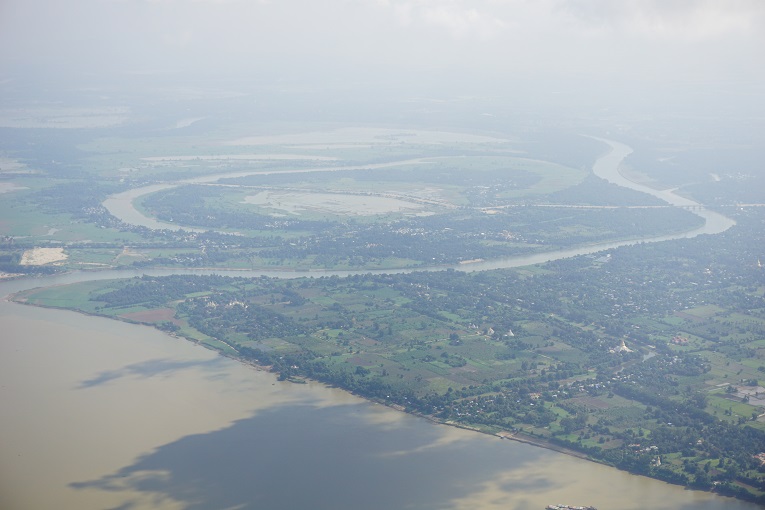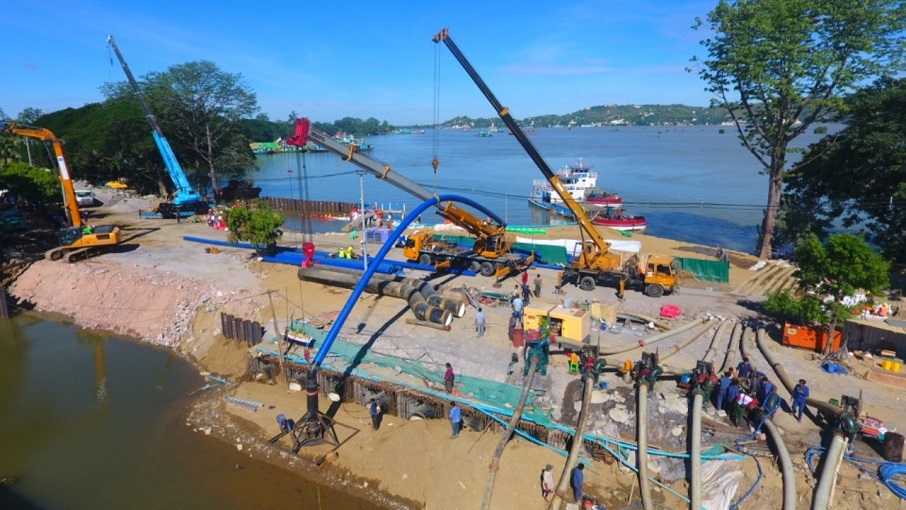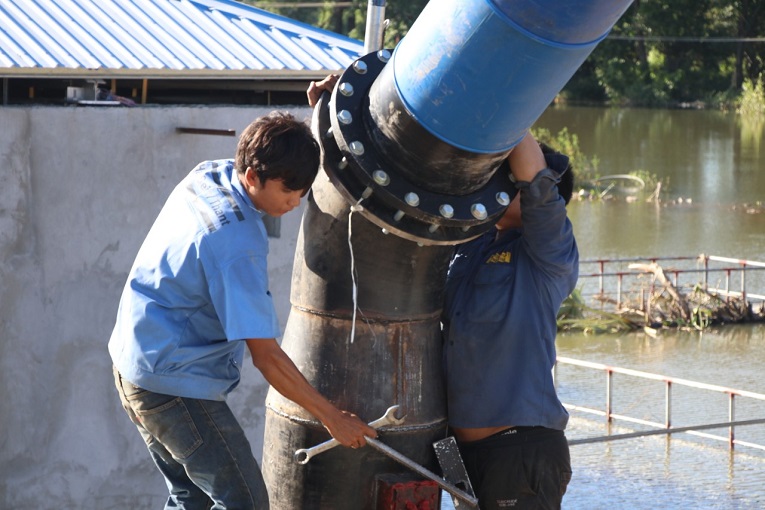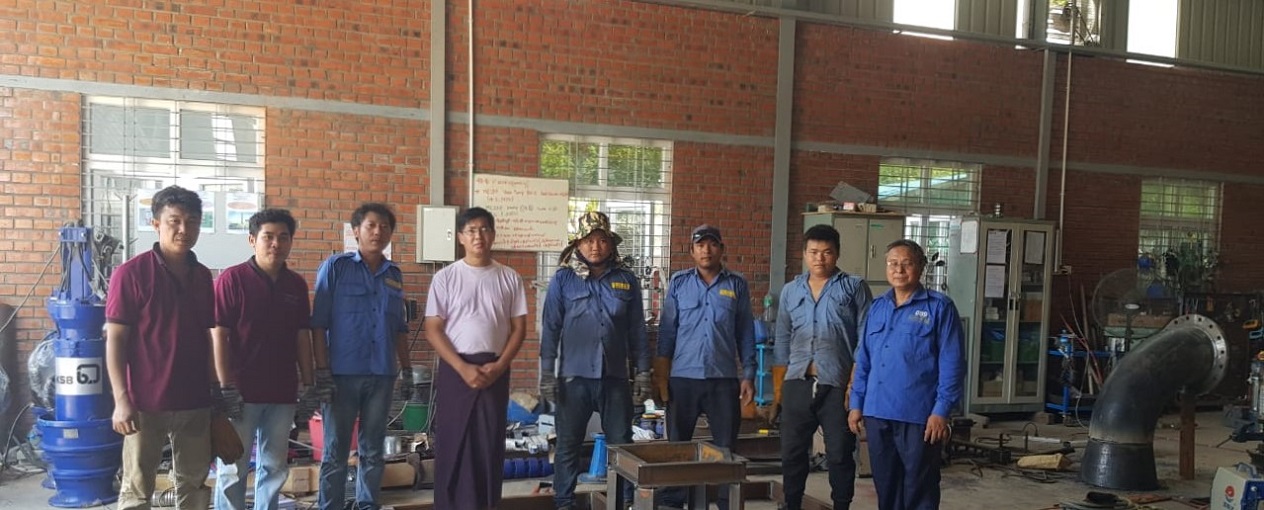



An emergency solution by HST and KSB following the collapse of an embankment on the Irrawaddy River proved so successful it will be used for other flood control systems, improving the health and safety of residents in Mandalay, Myanmar.
The land on the eastern bank of the Irrawaddy River (also known as the Ayeyarwady River) where the City of Mandalay is situated is low and prone to heavy flooding into the residentail parts of the city. The area is in need of a proper flood control system and infrastructure. Naturally, the overflow of flood water into these areas causes great inconvenience and discomfort to the residents who are deeply concerned about the adverse effects on their health brought about by direct contact with the flood waters or indirectly from damage to infrastructure, ecosystems, food and water supplies, and social support systems.
Heavy rainfall The flow of water becomes worse during the wet season running from May through to October as heavy rainfall causes rivers to rise. In 2019, several states and regions in Myanmar were hit by heavy monsoon rainfall and flooding from mid-July that started in the Kachin and Rakhine states and the Sagaing Region.
The United Nations report stated that over 40,000 people were displaced by the monsoon flooding by the end of that month and stayed in 186 evacuation centres in Kachin, Rakhine, Chin, and Mon states, as well as Bago, Sagaing, Mandalay and Magway regions. By early August, more than 89,000 people across nine states and regions were displaced by the monsoon flooding; the country needed a well-established drainage and flood control system.
Greater concern In July 2020, an embankment along the Irrawaddy River collapsed and flood control became an even greater concern for the authorities. The water from the swelling river leaked through the soil and the weakened embankment could not hold the pressure. The collapse resulted in a flood that destroyed the roads near the embankment and affected lowland areas.
More than 12,000 residents had to leave their homes. The authorities sought the technical and service support of pump distributor Han Sein Thant Engineering (HST) to help drain out the water at the collapsed embankment while fixing the damage and taking care of the welfare of the residents who lost their homes.
Due to the emergency and severity of the situation, the authorities could not allow much time for the construction of the usual concrete flood control structures to install the pumps. Mr James U Thant Zin, the managing director of HST, planned the standing support design with mobile pipelines as an immediate solution to address the situation. Since the standing support design was mobile, the HST engineers kept the pipelines short with 75 m in length, as the mobility made the it possible to set up the structures easier and closer to the main source of electricity.
HST used KSB’s Amacan pumps from its warehouse due to the high efficiency for applications with large flow range and lower power consumption. KSB’s Amacan pumps are designed with low-vibration hydraulic system with inlet ribs and optimised bellmouth for vortex-free inflow. KSB’s Amacan pumps ensure selfcentring seating in discharge tubes due to their weight and this makes the pump’s installation and removal easier, speeding up the execution of the emergency project.
Project success HST’s application knowhow with KSB’s Amacan pumps helped the authorities to quickly stop the damage caused by the flood. Following the successful execution of the project, the technical mechanism of the standing support design has been verified. Due to high construction costs to build concrete structures for typical flood control systems, it has been challenging for the authorities to execute various flood control projects.
During emergencies, it has been even more challenging as the conventional flood control stations take about twofour years to build. Now with the proven design from HST that is mobile and standing, the authorities will be able to help the residents more promptly at lower costs, especially during unforeseen emergencies.
“KSB’s Amacan pumps ensure self-centring seating in discharge tubes due to their weight and this makes the pump’s installation and removal easier, speeding up the execution of the emergency project.”
Health dangers of flooding Some of the effects on people exposed to flood water include acute cardiovascular diseases such as heart attacks, diarrhoeal, vector- and rodent-borne diseases, respiratory, skin and eye infections, chemical poisoning such as carbon monoxide poisoning, drowning, injuries from debris and submerged objects and falling masonry from damaged buildings as well as mental stress.
According to the World Health Organisation (WHO), one third of the flood-related deaths globally are from physical trauma, heart attacks, electrocution, carbon monoxide poisoning or fire. Provision of improved water supply and drainage are the most significant goals of the authorities aiming improve the standard of healthily living for the residents in the city of Mandalay.
About the author
The article was supplied by Seon Kim on behalf of KSB






